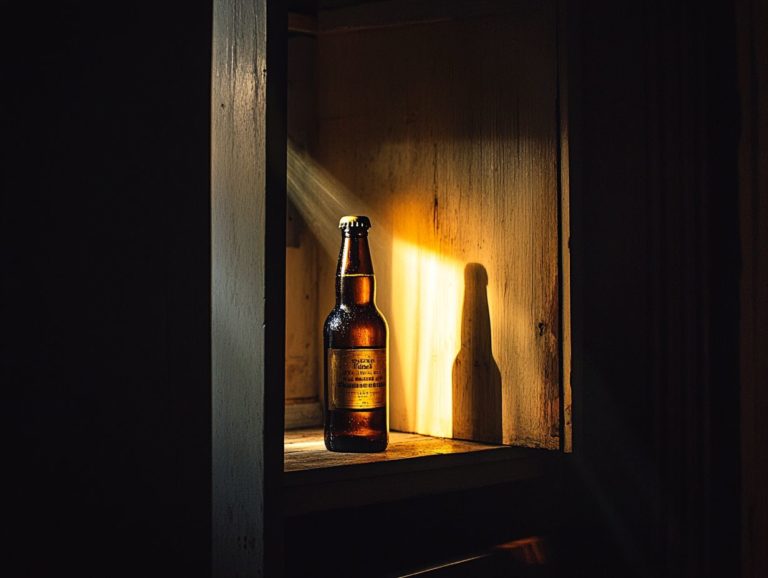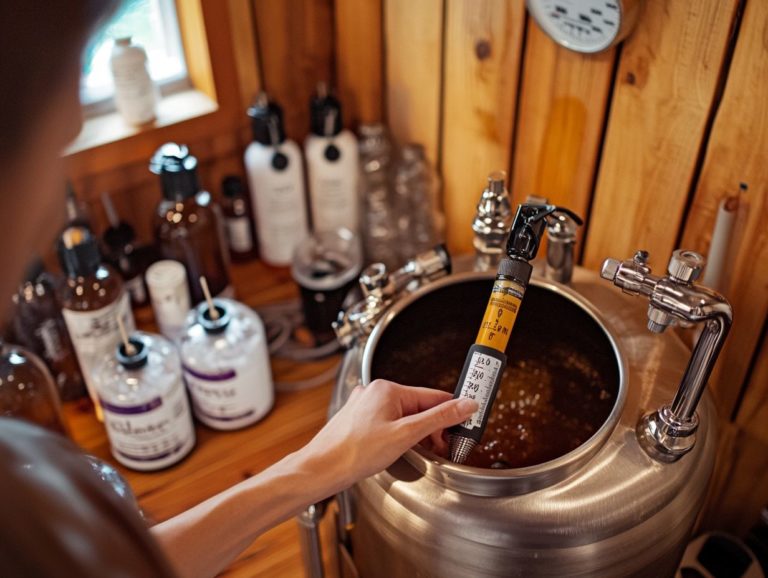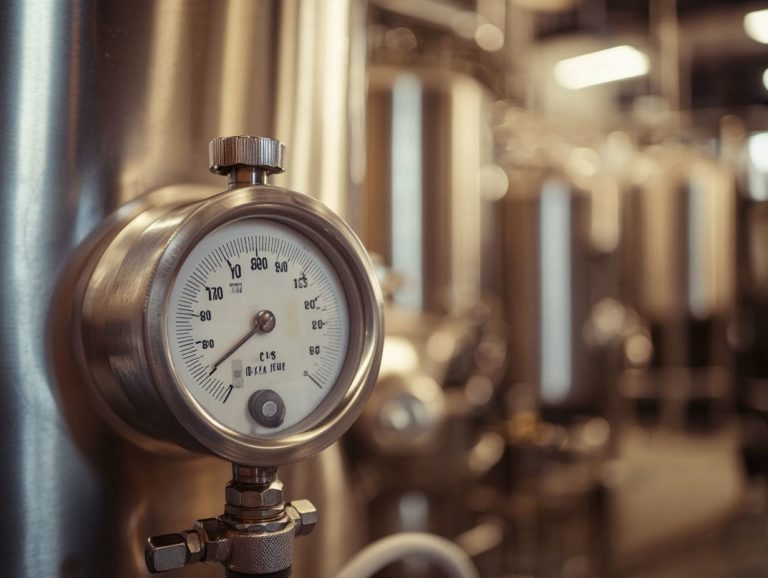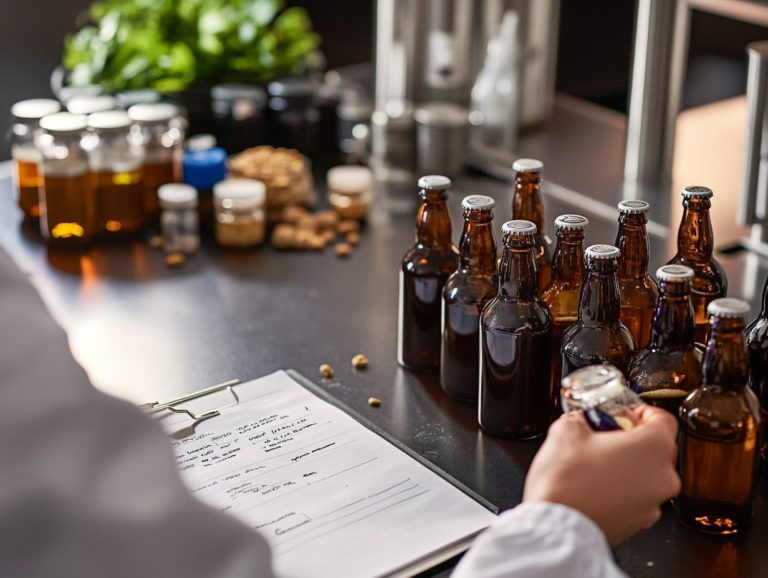How to Handle Beer Tannins and Astringency
Contents
- Understanding Beer Tannins and Astringency
- Key Takeaways:
- What Are Beer Tannins and Astringency?
- What Causes Beer Tannins and Astringency?
- How to Detect Beer Tannins and Astringency?
- Visual Inspection
- How to Prevent Beer Tannins and Dryness in Taste?
- Fixing Beer Tannins and Astringency
- 1. Diluting the Beer
- 2. Adding Calcium Carbonate or Baking Soda
- 3. Adding Tannin-Rich Ingredients
- 4. Aging the Beer
- Frequently Asked Questions
- What are beer tannins and how do they contribute to astringency and beer characteristics?
- Why is it important to control beer tannins and astringency?
- How can I identify if my beer has too much tannins and astringency?
- What can I do to reduce tannins and astringency in my beer?
- Is it possible to completely eliminate tannins and astringency in beer?
- Are there any benefits to having a certain level of tannins and astringency in beer?
Understanding Beer Tannins and Astringency
Understanding beer tannins and astringency is essential for both brewers and enthusiasts, as these components can profoundly influence your overall drinking experience. Knowledge of partial grain recipes and bottle conditioning can enhance your brewing skills.
This article delves into the nature of beer tannins, exploring their origins and how you can detect them in your brew. It also offers practical advice for preventing and remedying unwanted astringency, ensuring your beer remains smooth and enjoyable.
Whether you’re a budding brewer or a seasoned expert, mastering these concepts will undoubtedly elevate your brewing craft to new heights.
Key Takeaways:
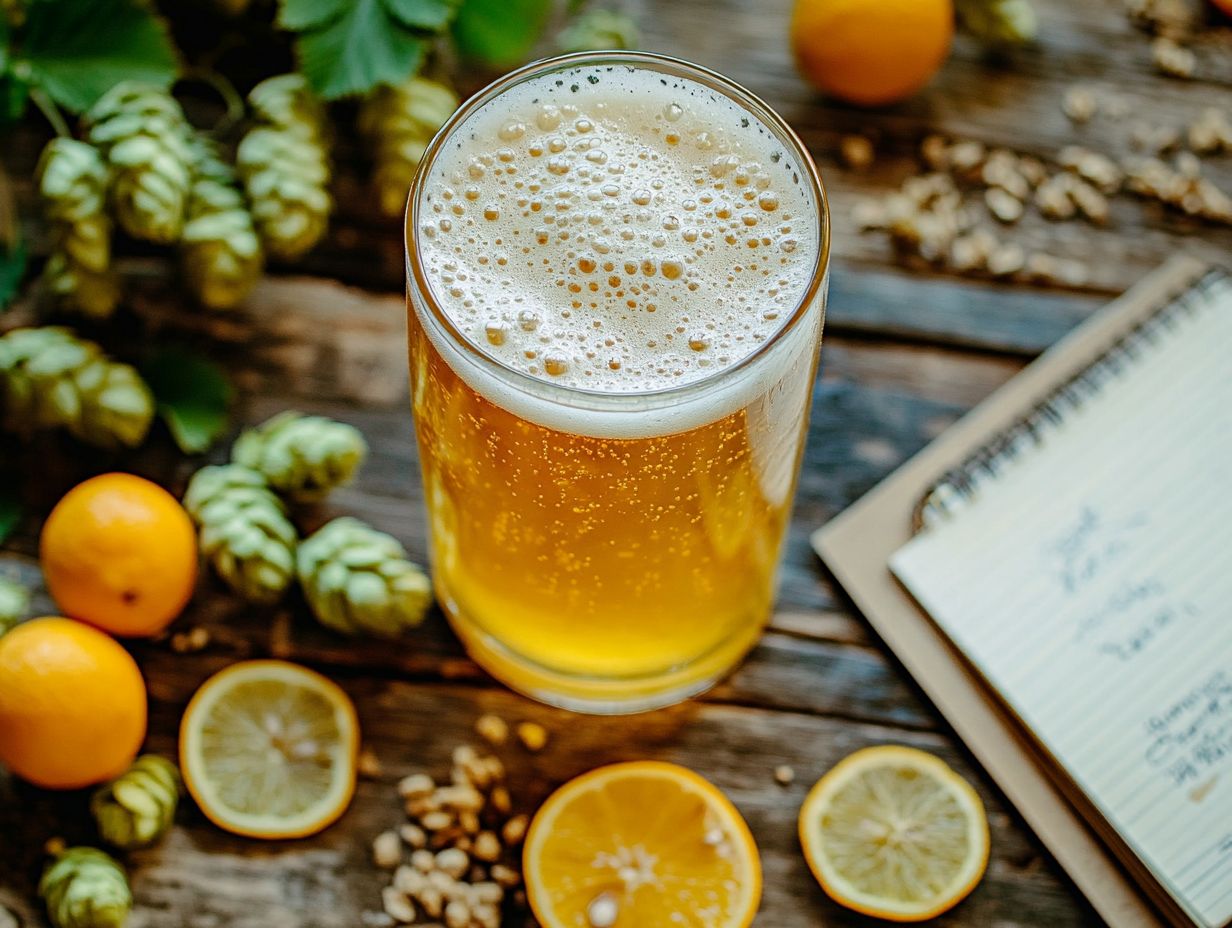
- Too much tannin and astringency can ruin the taste of your beer.
- Factors like over-mashing, high grain bill, poor water quality, and excessive boiling can cause tannins and astringency.
- Prevent tannins and astringency by adjusting mash pH, controlling boil time and temperature, proper grain crushing (the process of breaking down grains for brewing), and monitoring water quality.
What Are Beer Tannins and Astringency?
Beer tannins and astringency are essential concepts in brewing that significantly shape the sensory experience of the final product. Tannins, which are naturally occurring polyphenols found in grains, hops, and yeast, can lend astringent qualities to beer, influencing both its flavor profile and mouthfeel.
If not managed with care, this astringency can result in an undesirable aftertaste, especially in home brewing practices where the delicate balance of ingredients and techniques is paramount.
What Causes Beer Tannins and Astringency?
The causes of tannins and astringency in beer are intricate and can be traced to various factors throughout the brewing, fermentation, and bottle conditioning processes.
When you over-mash, utilize a high grain bill, or have poor water quality, you increase the likelihood of extracting tannins from the grains, which results in those undesirable astringent flavors. Additionally, oversparging can make worse the extraction of excess tannins.
Moreover, if you boil excessively or employ certain fermentation techniques, you may exacerbate these issues, ultimately affecting the clarity and stability of your final brew. Understanding brewing methods and fining techniques can aid in maintaining a balanced beer.
1. Over-Mashing
Over-mashing happens when grains are left soaking in hot water for too long, leading to excessive tannin extraction and an unwelcome increase in astringency in your beer.
This over-extraction can severely compromise your beer’s overall flavor profile, making it far less enjoyable for the discerning consumer. Tannins affect both the mouthfeel and the bitterness of your brew; thus, achieving a balanced extraction is essential.
Keep a close eye on both the mash pH and temperature. Ideally, aim for a mash pH between 5.2 and 5.6, with a temperature range of 150 F to 158 F. This will help you achieve optimal enzymatic activity while minimizing the risk of unwanted tannin leaching.
By carefully adjusting these variables, you can craft a smoother, more palatable beer that sidesteps the pitfalls of over-mashing, ensuring a delightful experience for all who savor your creation.
2. High Grain Bill
A high grain bill can inadvertently introduce an excess of tannins into your brewing process, especially if your grains aren’t crushed properly or if your brewing methods lack that essential balance.
This excess can lead to an undesirable astringency, ultimately detracting from the delightful flavor profile you aim to achieve. To manage tannin extraction effectively, it s vital to choose your grains with care and to use a gentle crushing technique that avoids breaking the grain husks too finely. Opting for coarse crush settings on your mill can facilitate better lautering (the process of separating the liquid wort from the solid grain) and help minimize tannin extraction during brewing.
Incorporating methods such as low-temperature mashes and sparging with cooler water can significantly reduce tannin release, ensuring that your beer remains smooth and highly drinkable. Being aware of these factors is crucial elevate your brewing experience now!
3. The Impact of Poor Water Quality on Brewing
Poor water quality can significantly affect your brewing process, leading to undesirable tannin levels that contribute to astringency in your final beer.
The mineral content and pH levels of your water are crucial in managing these factors. They directly influence tannin extraction during the mashing and boiling stages.
When certain minerals, like calcium and magnesium, are present in higher levels, they can enhance your beer’s overall stability and clarity while also supporting yeast health. Imbalances in your water chemistry can cause excessive tannin extraction from the grains, negatively impacting both mouthfeel and flavor profile.
By achieving the right balance through careful water treatment, you can cultivate a harmonious blend of flavors and promote an amazing drinking experience. Mastering this essential step is your ticket to brewing amazing beer!
4. The Effects of Excessive Boiling on Beer Quality
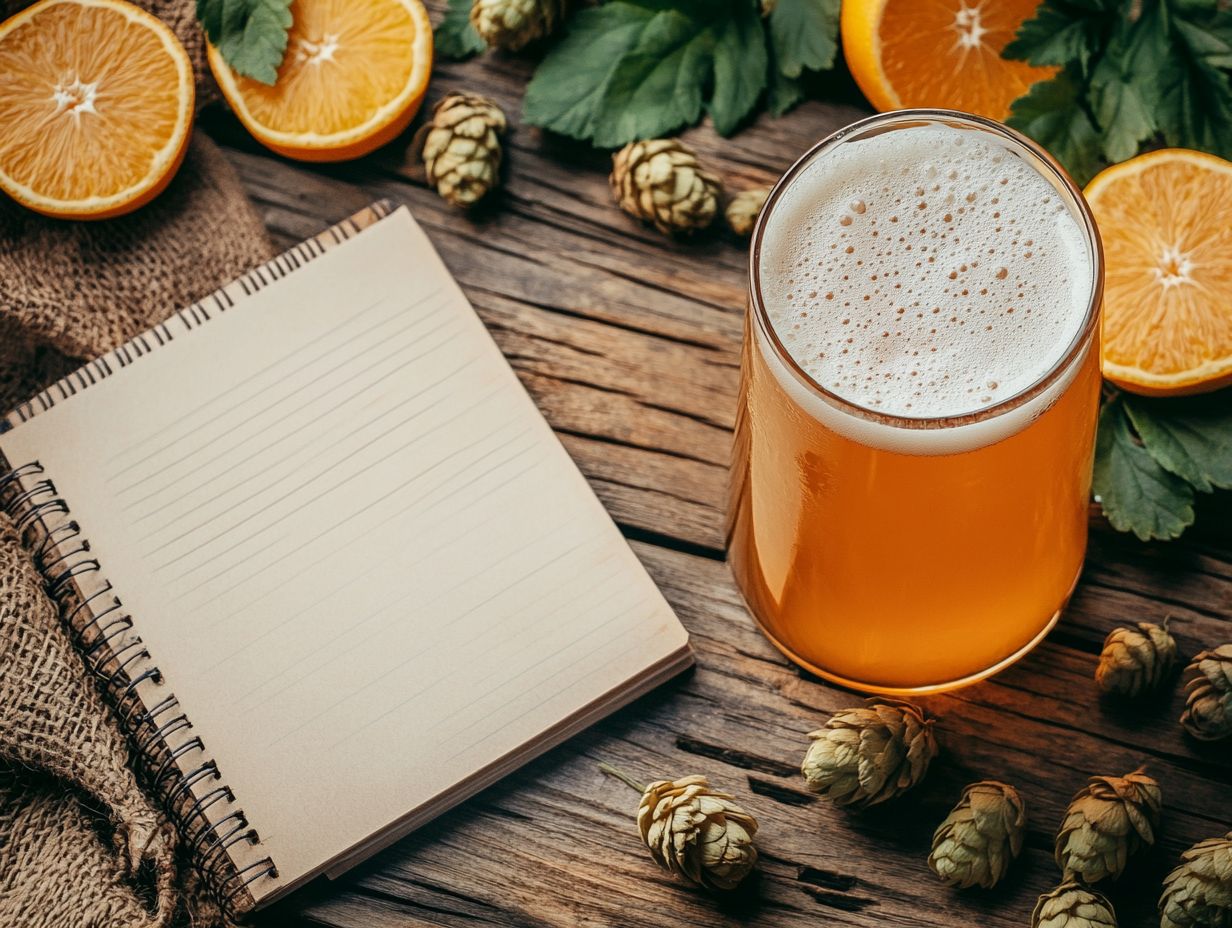
Excessive boiling during the brewing process can elevate the concentration of tannins and compounds from plants that can affect flavor and astringency, resulting in a distinctly astringent quality in your beer.
To craft a well-balanced flavor profile, it s essential to meticulously manage both boiling time and temperature. Prolonged exposure to high temperatures can extract unwanted compounds, ultimately altering the beer s finish.
By opting for lower temperatures and shorter boiling times, you can minimize tannin extraction, leading to a smoother mouthfeel.
Understanding the interplay between these brewing techniques and their effect on plant compound management enables you to create beverages that showcase the desired flavors and ensure a delightful drinking experience. The use of fining techniques and careful brew water management can further optimize your brewing results.
Finding this perfect balance may require some experimentation, allowing you to make adjustments based on your taste preferences and the unique characteristics of local ingredients. Understanding wine-making methods and utilizing fining agents can add additional layers of complexity to your beer flavors.
How to Detect Beer Tannins and Astringency?
Detecting tannins and astringency in beer requires a refined approach that combines sensory evaluation with visual inspection. Engaging in the classic taste test allows your palate to discern any presence of astringency.
Simultaneously, analyze visual characteristics such as beer clarity and haze formation, which can offer valuable insights into tannin levels and the overall quality of the brew. This dual method enhances your appreciation for the beer and equips you with the knowledge to identify potential issues.
1. Taste Test
A taste test is an essential method for detecting astringency in beer. Focus on the flavor profile and mouthfeel to identify any unpleasant aftertaste. This method is particularly important when experimenting with flavored sour beers or other complex tannins that might be part of your batch brewing process.
As you embark on this tasting journey, take a moment to appreciate the beer’s appearance and aroma, allowing the fragrant nuances to engage your senses fully. Astringency often reveals itself through a dry sensation in your mouth, potentially overshadowing more delicate flavors like fruity esters or malty sweetness.
While swirling the beer, pay close attention to its texture and viscosity. Notice how the astringent qualities may alter or diminish the expected flavors. Your ultimate goal is to determine whether the underlying notes of caramel, hops, or even chocolate can shine through, or if the astringency casts an unwelcome shadow over your overall tasting experience.
Visual Inspection
A visual inspection of beer can unveil essential clues regarding potential dryness in taste. Clarity and haze formation act as key indicators of tannin levels.
The way light dances on a beer’s surface reflects its freshness. It also significantly influences its overall mouthfeel, a crucial aspect of the consumer experience.
When you notice a higher level of haze, it often signals the presence of suspended solids and proteins. These can enhance flavor complexity while also contributing to perceived dryness in taste. Choices made during the brewing process, such as grain selection and boiling times, directly affect these visual characteristics.
Brewers can refine their techniques by understanding the relationship between clarity and haze. This understanding helps ensure a balanced final product that captivates the palate.
Employing effective brewery practices and mastering the art of sour blending can also enhance your brewing craft.
How to Prevent Beer Tannins and Dryness in Taste?
To ensure your beer doesn’t suffer from dryness in taste or too much tannins, understanding the nuances of beer brewing and the chemistry involved is crucial.
Pay careful attention to several key aspects of the brewing process to prevent beer tannins and dryness in taste. Focus particularly on adjusting mash pH and employing effective brewing methods.
Utilizing water treatment and understanding yeast interactions are vital for creating a superior brew. By meticulously controlling factors like water quality and grain treatment, you can significantly reduce tannin extraction.
This ultimately ensures a well-balanced flavor profile in your beer. Implementing fining agents, such as gelatin fining or isinglass, can also aid in achieving optimal clarity and stability.
1. Adjusting Mash pH
Adjusting the mash pH is a crucial technique for managing tannin extraction during the brewing process. By maintaining optimal pH levels, you can significantly reduce dryness in taste in the final beer.
Keeping an appropriate mash pH is essential for enhancing your brewing experience. It also ensures the overall quality of the beer you produce.
When you maintain the pH within the ideal range, typically between 5.2 and 5.6, you promote better enzyme activity. This facilitates the efficient conversion of starches to sugars.
This delicate balance is vital in minimizing undesirable tannin levels that can result in a harsh mouthfeel and off-flavors in the finished product. Mastering this aspect of brewing science can significantly improve your brew.
By mastering pH management, you have the power to create a smoother, more enjoyable drinking experience. This ultimately elevates your final product and delights your consumers.
This is an important part of the brew process that every brewer should prioritize.
2. Controlling Boil Time and Temperature
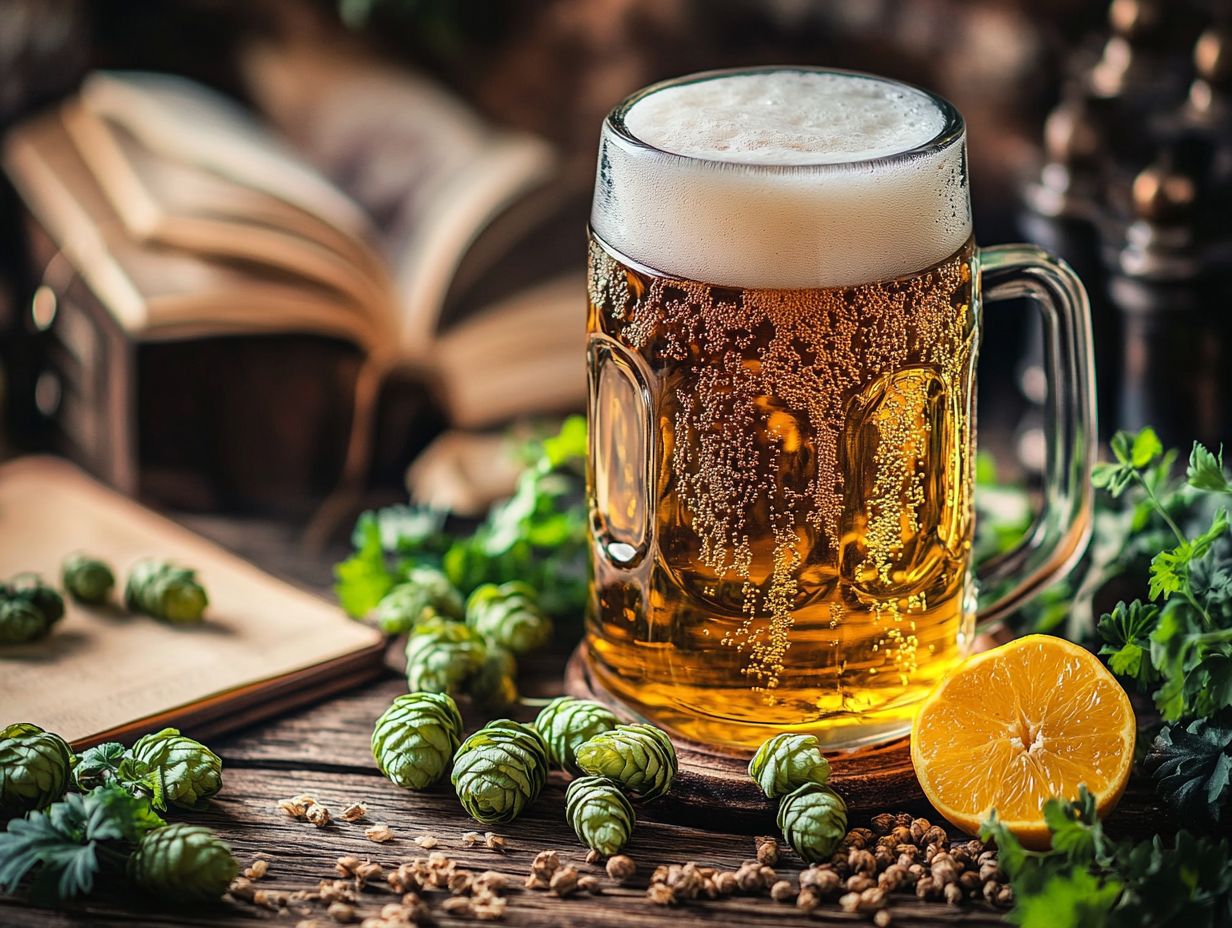
Controlling the boil time and temperature is crucial for preventing excessive tannin extraction. After all, nobody wants their beer to taste like liquid sandpaper.
Lengthy boiling can ramp up the dryness in taste, so it s smart to keep things in check. These are essential brewery techniques that can make or break your home brewing experience.
To achieve those optimal flavor profiles, you should pay close attention to the specific boiling parameters in your brewing process. A gentle boil, ideally between 180 F and 212 F, allows you to extract delightful flavors and aromas while keeping the undesirable tannins at bay.
Understanding the principles of brew chemistry can help optimize flavor extraction and minimize issues.
Adjusting your boil duration from a quick 30 minutes to the more standard hour can have a significant impact on the extraction degree. Don t forget to consider the timing of your hop additions and the quality of the grains you re using.
These elements come together in harmony with the temperature and boil length, creating a symphony of flavors. Being mindful of these fermentation techniques will also contribute to a well-crafted beer.
By grasping these relationships, you can effectively navigate the complexities of tannin extraction. This leads to a well-balanced and enjoyable brew.
3. Proper Grain Crushing
Proper grain crushing is an essential step in your brewing process that can significantly influence tannin levels and the overall quality of your beer.
Achieving the perfect crush size is vital, as it directly impacts the extraction of starches and sugars during mashing. If you crush the grains too finely, you run the risk of extracting excessive tannins, which can introduce a harsh astringency that detracts from your beer’s flavor profile.
On the other hand, a coarser crush may impede efficient extraction, adversely affecting fermentation and resulting in a brew that lacks body. By mastering proper techniques such as adjusting the roller gap in your grain mill and ensuring consistent crush sizes you can elevate your brewing game.
This attention to detail enhances flavor, mouthfeel, and overall balance in your creations. It will lead to beer with better characteristics and stability.
4. Monitoring Water Quality
Monitoring water quality is essential to your brewing success, as subpar water can lead to unwanted tannin levels and astringency in your final beer. Proper water management is a cornerstone of brewing science.
The delicate balance of minerals like calcium and magnesium, along with overall pH levels a measure of acidity or alkalinity plays a significant role in this intricate process. A higher concentration of specific minerals can enhance tannin extraction from the grains, while improper pH levels may result in undesirable flavors and mouthfeel.
You must pay close attention to these factors as they influence the taste, stability, and clarity of your finished product. By implementing effective water treatment strategies such as adjusting the mineral composition and fine-tuning the pH you can craft a more refined brew that is both enjoyable and consistently excellent.
This ensures your beer maintains its stability and flavor profile.
Fixing Beer Tannins and Astringency
Addressing issues with beer tannins and astringency necessitates a thoughtful strategy. Consider methods like diluting the beer or allowing it to age, both of which can help refine its flavor profile.
By adopting targeted brewing practices, you can effectively reduce the impact of excessive tannins and elevate the overall drinking experience.
1. Diluting the Beer
Diluting the beer is a practical approach to reducing astringency, where you can add water or another neutral liquid to create a more balanced flavor profile.
This process demands careful attention to the beer’s initial characteristics, as over-dilution can jeopardize its overall integrity. Take a moment to assess the beer’s existing flavor notes, including bitterness and sweetness, so you can determine the right dilution level that enhances the taste rather than diminishes it.
A wise strategy is to make gradual adjustments and sample after each addition, allowing you to monitor the changes in flavor profile and mouthfeel. It’s also crucial to understand how dilution impacts the alcohol content, as it can alter the drink s strength and aromatic qualities.
Using nuanced techniques, such as blending different batches or selecting specific neutral liquids, can help you maintain the beer’s character while effectively managing astringency. These brewery techniques are key to achieving consistency and quality.
2. Adding Calcium Carbonate or Baking Soda
Incorporating calcium carbonate or baking soda into your brewing process can be an excellent strategy for neutralizing excessive astringency in beer. By adjusting the pH levels, you can effectively alter the flavor profile, enhancing the overall drinking experience.
When you blend these natural compounds into your brew, they work to harmonize the taste, making the beer far more enjoyable for a wider audience. For example, if you encounter high tannin levels from certain grains or hops, adding calcium carbonate or baking soda during the mash or boil can prove beneficial.
This not only helps manage astringency but also plays a vital role in achieving that sought-after mouthfeel. Understanding the specific characteristics of your brewing water is essential, as it significantly impacts how these additives interact with your ingredients, ultimately affecting the final product.
3. Adding Tannin-Rich Ingredients
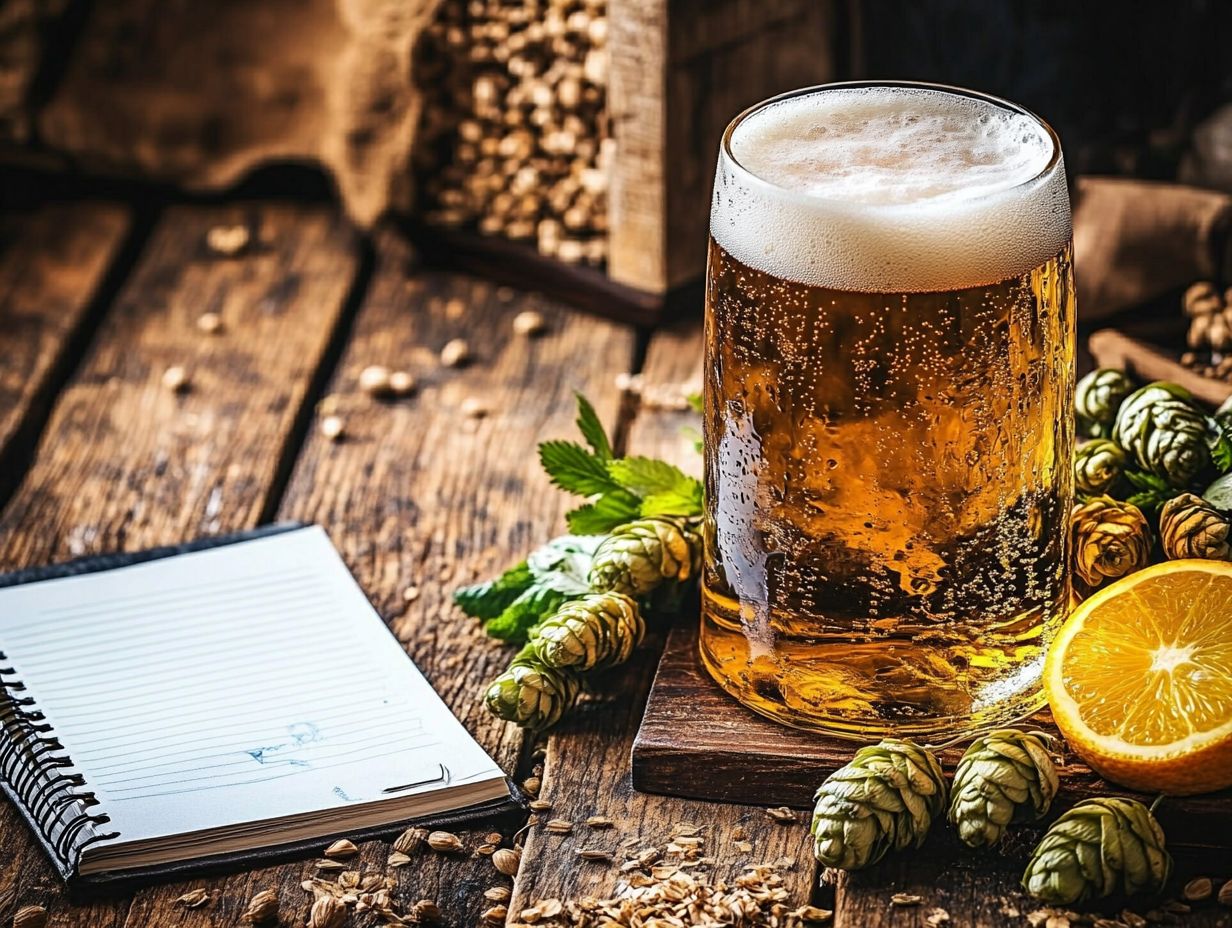
Incorporating tannin-rich ingredients, such as select fruits or spices, can dramatically boost the complexity and balance the astringency of flavored sour beers. This adds an interesting layer of tannic complexity to your brew.
This thoughtful addition not only reveals subtle layers of flavor but also enriches the mouthfeel and overall harmony of the brew. Ingredients like black tea, oak, and certain berries help round out the sourness, creating a counterbalance that transforms the drinking experience into something truly satisfying.
They introduce delightful contrasts to the acidity of sour beers, enhancing your palate and deepening the overall tasting journey. By carefully selecting these ingredients, you can craft a beverage that captivates with every sip, allowing the intricate interplay of flavors to shine and invite exploration!
4. Aging the Beer
Aging your beer can work wonders by smoothing out harsh tannins and astringent flavors, allowing it to evolve into a more balanced and refined profile over time.
As yeast and other compounds continue to interact during the aging process, you’ll often discover a rich tapestry of flavor notes that emerge more prominently. Factors such as temperature, light exposure, and the type of container you choose for aging can profoundly influence the final product. For instance, if you opt for oak barrels, you might find that they introduce additional texture and complexity, enriching the overall palate. These factors not only affect beer aging but also contribute to its stability.
Oxygen affects how your beer ages; it can facilitate desirable changes while also presenting a challenge, compelling you to strike the right balance. This ensures that your beer matures into something truly exceptional and intriguing.
Frequently Asked Questions
Let’s answer some common questions about tannins and astringency!
What are beer tannins and how do they contribute to astringency and beer characteristics?
Beer tannins are natural compounds found in the grains and hops used to make beer. They contribute to astringency by causing a dry, puckering sensation in the mouth when consumed. This is an important consideration in home brewing and professional settings alike.
Why is it important to control beer tannins and astringency?
Excess tannins and astringency in beer can lead to an unpleasant mouthfeel and taste. They can also mask the flavors of other ingredients and affect the overall balance of the beer. Tannins and astringency are key elements in brew chemistry that require careful control.
How can I identify if my beer has too much tannins and astringency?
If your beer has a dry, puckering sensation in the mouth that lingers, it likely contains too much tannins and astringency. The bitterness and hop flavors may also be subdued.
What can I do to reduce tannins and astringency in my beer?
One way to reduce tannins and astringency is to adjust the pH level of your beer. This can be done by using acidulated malt or adding an acid such as lactic acid. You can also try using different types of grains and hops or adjusting the brewing temperature and time. Another approach is to make use of fining agents (substances used to clarify beer) like Isinglass or Gelatin.
Is it possible to completely eliminate tannins and astringency in beer?
No, tannins and astringency are natural compounds in beer and cannot be completely eliminated. However, they can be controlled and minimized through proper brewing techniques. Effective use of brewing science can help in managing these compounds.
Are there any benefits to having a certain level of tannins and astringency in beer?
Yes, a moderate level of tannins and astringency can add complexity and balance to the flavor profile of certain beer styles, such as IPAs and stouts. They can also improve the mouthfeel and overall drinking experience of the beer. Techniques like oak aging and fruit additions can introduce desirable levels of these compounds!

